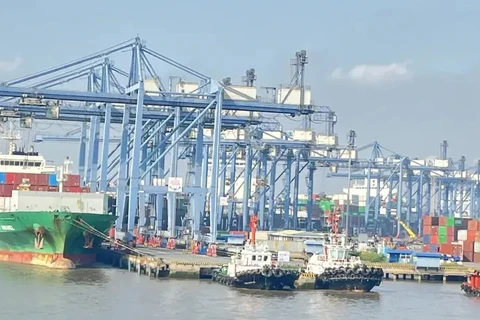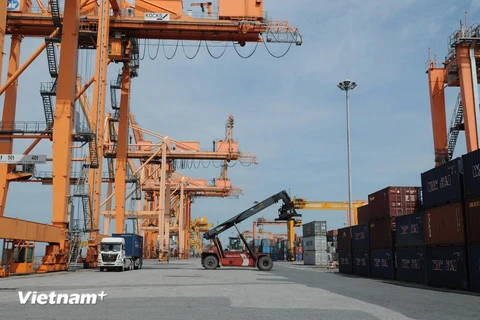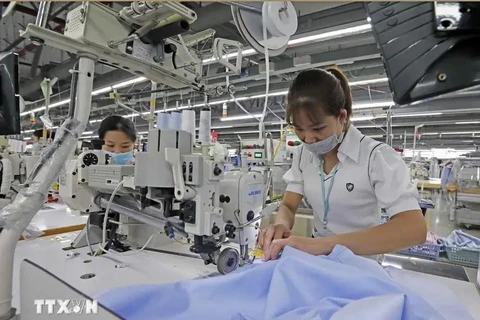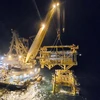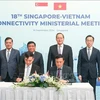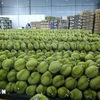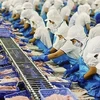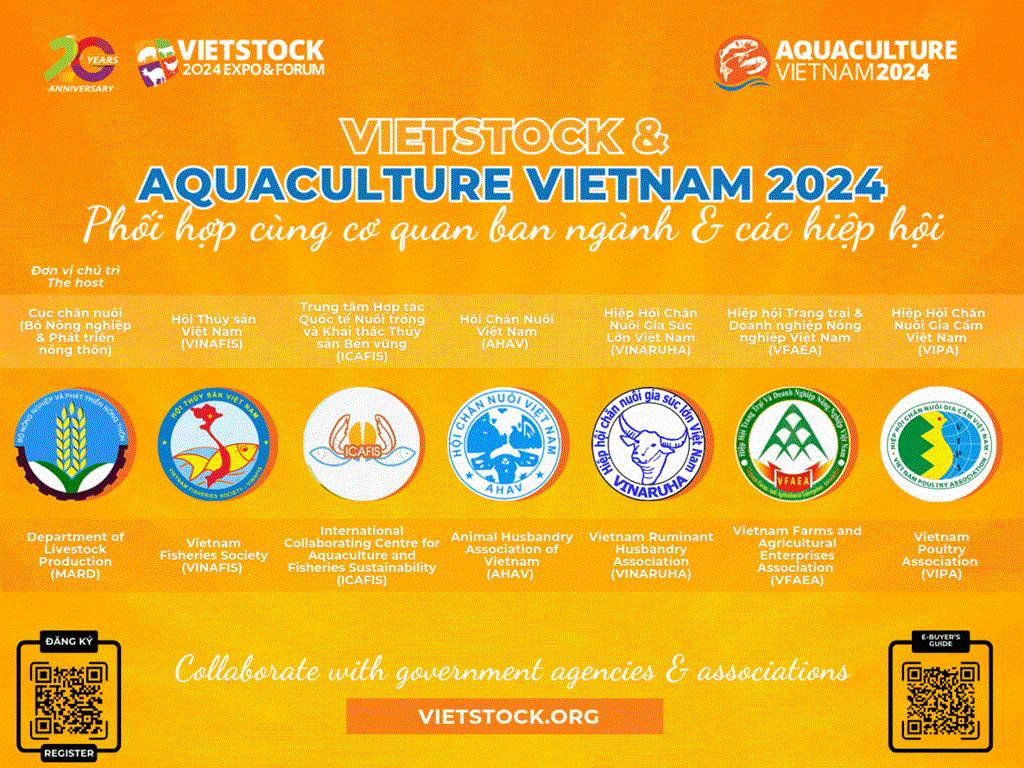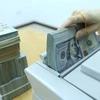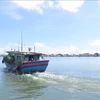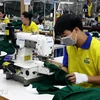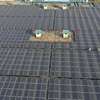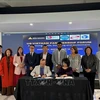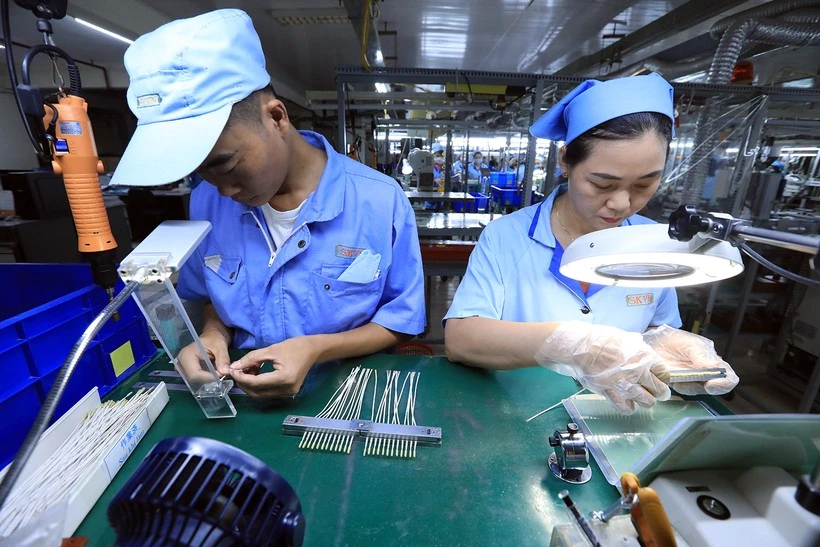
Hanoi (VNA) – Vietnam has exported around 200 billion USD worth of goods to the European Union (EU) over the past four years after the EU-Vietnam Free Trade Agreement (EVFTA) officially came into force on August 1, 2020.
The Comprehensive and Progressive Agreement for Trans-Pacific Partnership (CPTPP) has the second highest standards of all free trade agreements that Vietnam has signed. As a new-generation free trade agreement (FTA), the EVFTA is the most comprehensive agreement that the EU (with 27 developed economies) has signed with a developing country like Vietnam.
Vietnam has made continuous efforts to improve its institutions to meet the high requirements of the agreement. However, there are still plenty of challenges for Vietnamese businesses and industries as they enter the 5th year of the EVFTA.
Exports increase sharply
Currently, the EU is Vietnam's 4th largest trading partner. Notably, the proportion of Vietnam's exports to the EU market has increased sharply with the largest market share compared to other ASEAN nations exporting to the EU. Vietnam has a trade surplus with the EU, the main export markets being the Netherlands, Germany, Italy, Belgium, and France. Vietnamese exports to the EU continue to grow strongly, including seafood, vegetables, textiles, footwear, wood and wooden products.
Specifically, since 2020, Vietnam's exports have enjoyed double-digit growth (from 12-15%/year), with the total export turnover from 2020 to the end of June 2024 reaching 200 billion USD. In the first six months of this year, the country’s exports hit nearly 24.7 billion USD, an increase of 15.37% over the same period in 2023.
Phan Thi Thanh Xuan, Vice President and General Secretary of the Vietnam Leather, Footwear and Handbag Association (Lefaso), said that the EU market has always been the main market for the Vietnamese leather and footwear industry. Maintaining development is of course one of the industry's focuses as the EU market is second only to the US market.
Xuan added that due to the COVID-19 pandemic, all markets have declined, but thanks to the EVFTA, the leather and footwear industry has been able to maintain growth.

However, there will continue to be challenges, especially the European Green Deal, which will force all businesses to restructure to meet the requirements of the global supply chain. According to the WTO and Integration Centre under the Vietnam Chamber of Commerce and Industry (VCCI), the EVFTA benefits most businesses signatory to the agreement. However, businesses also face strict requirements and commitments to meet the "Green" standards of this market.
Truong Van Cam, Vice President and General Secretary of the Vietnam Textile and Apparel Association (Vitas), stated that the EU's regulations are an inevitable trend, but this also creates challenges for the textile and garment industry to produce sustainable products.
"In the past, fast fashion was produced, consumed, and disposed of very quickly. Therefore, the amount of waste released into the environment is large That is why they came up with a strategy for sustainable textiles and started from the ecological design stage to sustainable production and consumption. The EU requires that products, from the design stage, must be recyclable when discarded. Products that cannot be sold or are inventoried must be collected or recycled by the supplier, he said.
Be proactive to not miss opportunities
Although there are many potential challenges, if Vietnam successfully takes advantage to boost green exports to the EU, the benefits are also quite significant.
Nguyen Hong Hanh, First Secretary of the Vietnam Trade Office in Belgium and the EU, said that the EU will issue laws for each type of imported product to regional countries, starting at the end of this year and early next year.
These include regulations on waste collection that will take effect from the beginning of 2025. Product passports to trace the origin throughout the product's life cycle are expected to take effect from the beginning of 2026. Regulations on deforestation-free products have been in effect since 2023, but from December 30, 2024, importers must carry out due diligence reports.
Although Vietnam is a leading export partner in the ASEAN region to the EU, Vietnam's exports only account for more than 2% of the EU's market capacity. Currently, the majority of enterprises taking advantage of the opportunities from the EVFTA are foreign-invested enterprises in Vietnam.
Luong Hoang Thai, Director of the Multilateral Trade Policy Department under the Ministry of Industry and Trade, said that foreign-invested enterprises take advantage of incentives as they have experience in this market and can meet the rules of origin and proactively source raw materials. Thus, they respond better than Vietnamese enterprises.
Therefore, in the process of implementing the EVFTA, Vietnamese authorities have also taken note and will need stronger support so that enterprises can better take advantage of the incentives brought about by the agreement.
According to statistics from the Ministry of Industry and Trade, the rate of taking advantage of incentives from the EVFTA is currently only about 20%. This figure is higher than that of other FTAs but has not yet met the expectations set for the agreement. Therefore, Vietnam needs to have support mechanisms to help businesses take better advantage of the agreement's incentives and meet the "green" regulations and standards of this market./.
